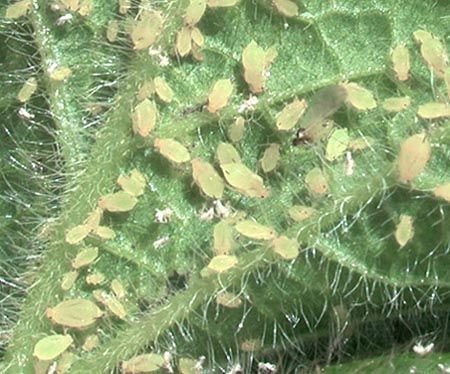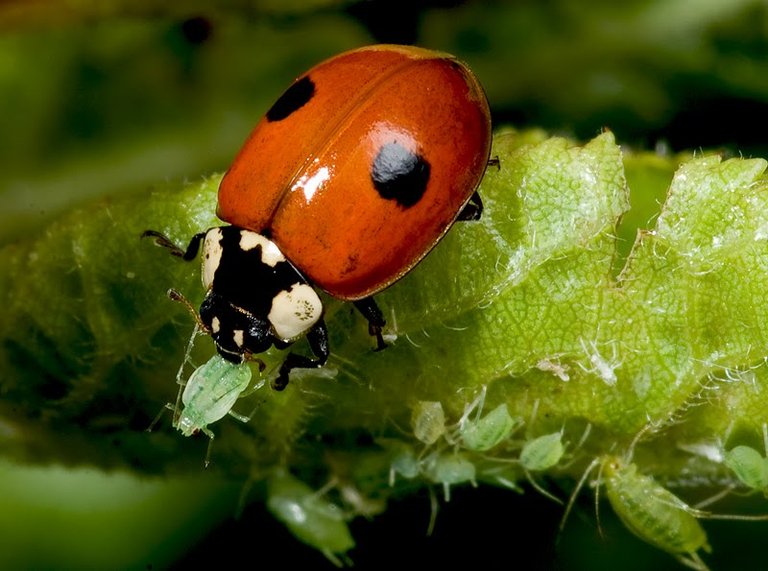Thankful @farms and @steemchurch for giving me the opportunity to participate with the theme of Thursday: APHIDS
The aphids are small insects that if a control is not carried out in time, can end the crops, these pests invade the plants sucking the sap from the leaves and subtracting strength from the crop, however the most important damage they do so by being vectors of viruses that rapidly deteriorate crops. For this reason, farmers must take appropriate measures to prevent these insects from ending plantings.

Source
The aphids are families of white flies and scales, however it differs from the latter because the juvenile stages are mobile ie they have legs and can walk unlike their cousins that remain glued to the plant while they are small and are the adults in all three cases the only ones that have wings and can fly.
They are grouped in the most tender tissues of the plant and extract the sap to feed, in the process the tissues of the plant irritate and atrophy achieving irregular shapes.

Source
Just as their cousins in the feeding process excrete a sugary substance that attracts the ants that feed on it, in exchange the ants defend the aphids from the attack of predatory insects.
This sugary substance also attracts a fungus called sooty mold that is deposited on the leaves and prevents the passage of light by subtracting photosynthesis.
Adult aphids have wings and can fly from one plant to another, if the plant where they took off was sick with a virus, then the aphid can transmit the disease by landing on the next plant and sucking the sap as the white-legged mosquito does with Dengue in humans.

Source
What crops attack aphids?
Aphids can attack a large number of crops, the attack on citrus is famous, where it produces leaves rolled up in the buds, but the most important damage was made by the black aphid, which transmitted a virus that caused the sadness of citrus fruits, the sadness of citrus, ended with millions of trees around the world, bankruptcy to the world citrus, by the eighties in the last century.
In the case of paprika, they transmit viruses such as PVY, which wrinkle the leaves of the head and produce speckles, the uncontrolled attack by aphids is particularly important in greenhouses, especially when the use of agrochemicals is abused and they lose toxicity on the aphids.
Control of aphids
This is an easy pest to control when it is not transmitting viruses and what is pursued is to keep populations below the economic threshold of infestation (ie the point where they do not do economic damage and it is not profitable to control it).
However, if we wish to stop the progression of a virus, the problem is much more complex and almost always the disease manages to impose itself, given that a single insect is enough to transmit the disease.
The aphids have many biological controllers, the ladybugs are the most famous, however the lacewings have a fundamental role, we know a case of a plantation of lemons that has practically no aphids product of a large population of lacewing Years ago they were released to control thrips and whitefly in vegetable crops, but they adapted so well that nowadays they are flying abundantly at night in the crops.

Source
When insecticides are used in an uncontrolled way to attack other insects, those insects that feed on the aphids are killed, then the aphid population explodes secondarily and they cause significant damage, as described in the article on the toxicity of agrochemicals. .
Soap is an excellent aphid controller that does not affect beneficial insects, soap also serves against whitefly since the control principles are the same, because whiteflies and aphids are from the same family.
White oil is a recognized controller of aphids, it reduces the ability to breathe and insects die, but we must be careful not to mix it with sulfur because it can burn the crop to cause a strong phytotoxicity.